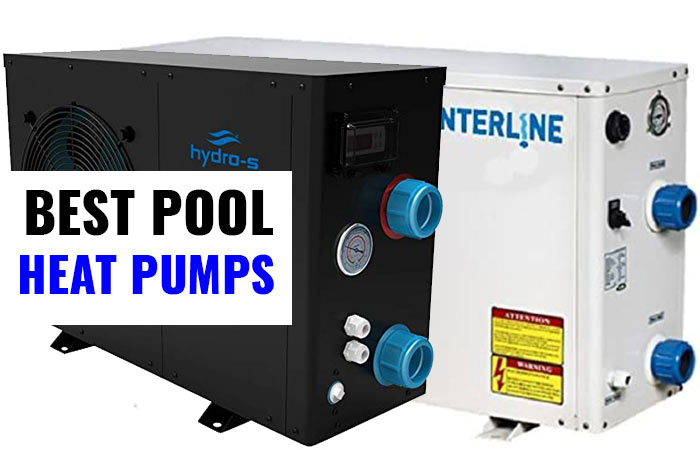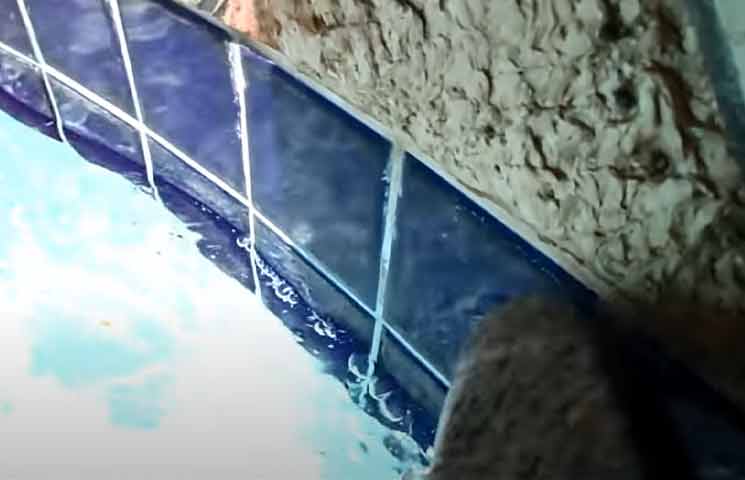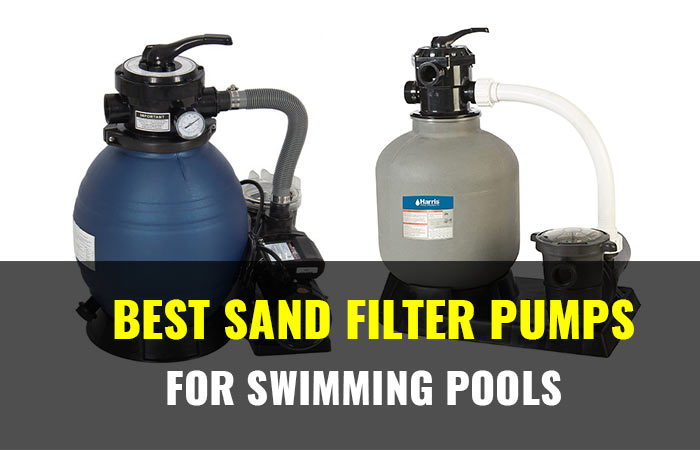Pool Flocculant Basics – How to Use, Homemade + What to do if not Working or Sinking
When swimming pools get dirty, they often have different solutions to this dirt depending on the cause. One of the most commonly used methods to clean pools is adding a flocculant to it. Pool flocculants are some of the best cleaning chemicals for pools owing to how fast and effective they are at it.
Pool flocculants can be quite complex to understand and use as they come in different forms and may have different instructions on how to use them. However, all you need to know is that flocculants are meant to help you clear up the pool that can’t be cleared by your filtration system. While most of the flocculants available are bought from shops, you can also make your own right at home and it’ll be just as effective as the commercial ones.
In this guide, we take a look at what flocculants are, how to use them, a review of the best, how to make your own at home and frequently asked questions.
What is a Pool Flocculant & What Does it Do?
Often simply called a pool floc, a pool flocculant is a chemical that is added to the pool water to clump together the microscopic pieces of dirt into larger clumps that can be removed at the bottom of the pool.
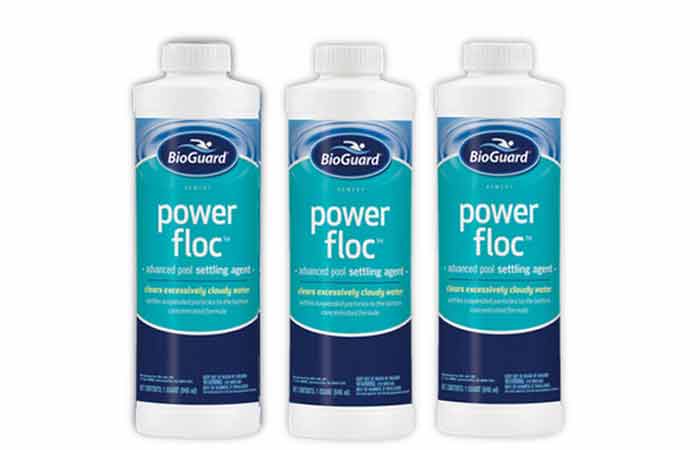
Often, the pool filter pump system removes dirt from the water but the tiny ones such as microorganisms and others can easily escape the pool filter. with a flocculant in the water, these tiny pieces of dirt are attracted to each other forming larger and more visible pieces of dirt. In the end, the larger pieces of dirt can be removed with ease from the pool as they settle at the bottom.
Some Common Pool Flocculants include;
- CrystalClear RapiClear
- Pool Basics Drop Down Flocculant
- Cloroxx Sink to Clear Flocculent
- BioGuard Powerfloc
Jump to our review of the best flocculants
How to use Flocculant (with Sand filter) in a Swimming Pool
When you’ve decided on the right flocculant for your pool, check the manufactures instructions and follow the steps below to floc your pool.
A word of caution about flocculants is that they’re chemicals that should be handled with care as they can be harmful. When using them to clear your pool, make sure you have the right gear and follow the manufacturer’s instructions.
1. Raise the level of the water
Given that some water will be lost due to the vacuuming process in the water, you should fill the pool to its highest point. The aim is to prevent the water dropping below the filters level. If this happens, the pumps won’t be able to circulate the water effectively.
To do this, simply close the pool’s outlet then open the inlet until you feel the water level is just right.
2. Balance the pH of the water
It should be between 7.4 and 7.6. Balancing it to this level is important given that most flocculants can affect the pH in one way or the other. If you make it neutral, a change in pH won’t be that severe and it can thus be corrected with ease. Also, at this level, the sanitizer in the pool will still work as needed.
3. Find out your pool’s exact volume
If you have no idea of pool’s volume,calculate. This will help you determine the amount of flocculant needed.
4. Dilute the flocculant
Check on the flocculant’s label for instructions on how to mix it in the water. Different flocculants will have different levels of dilution and some may even be added directly into the water.
5. Add the flocculant to the pool water
After getting the right amount of flocculant for your pool, add it slowly at the edges of the pool to make sure it spreads out evenly. Don’t add it right at the edge but a few inches inwards instead. Too much close to the edge might only make the flocculant stick to the wall.
6. Run the pool filter pump
Turn on the pool filter pump then let it run for about 6 hours. This mixes the flocculant in the whole water making it effective at clumping the dirt.
7. Turn off the pump overnight
Once the pump has mixed the flocculant in the water effectively, turn it off then let the pool stay without interference overnight. This is the time the flocculant will work to coagulate the pieces of dirt into large clumps at the bottom of the pool.
8. Turn your pool filter to Waste.
This setting draws water from the pool and sends it straight to the waste outlet without passing through the filter. The waste can be useful when vacuuming if there is a lot of dirt and debris on the bottom of your pool
9. Turn the pump on
In the morning after the day of adding a flocculant to the pool, you will notice sediments at the bottom of the pool. In such a case, you can turn on the pump to filter these sediments out of the water.
10. Vacuum the bottom of the swimming pool
Use a vacuum cleaner to suck up the dirt from the bottom of the pool. Some of the dirt might not be removed from the pool water by the pump filter alone. This requires a vacuum cleaner.
11. Replace the lost water
The vacuuming process will have reduced the amount of water in the pool. In such a case, you need to replace the water by opening the inlet.
12. Backwash the pool filters
To remove dirt and any sediments collected in the pool filters, perform a backwash on them. This makes them effective at capturing the dirt from the water again.
With these simple steps, you should have your pool water crystal clear again. While going through these steps, avoid using the pool for any activity until you’re effectively done. Otherwise, it’ll not be effective and you risk harm from the flocculant in the water.
Homemade Pool Flocculant
Some items you can use as pool flocculants at home include the following:
- Baking soda
- Muriatic acid
- Bleach
- Borax
- White vinegar
- Lemon juice
- Rubbing alcohol
- Simple green
- Alum (Aluminum Sulfate)
Some of these are cleaners which would help do away with dirt in the water the same way DIY pool clarifiers do.
Best Commercial Flocculants
Some of the best commercial swimming pool flocculants include the following:
CrystalClear RapiClear Liquid Flocculent
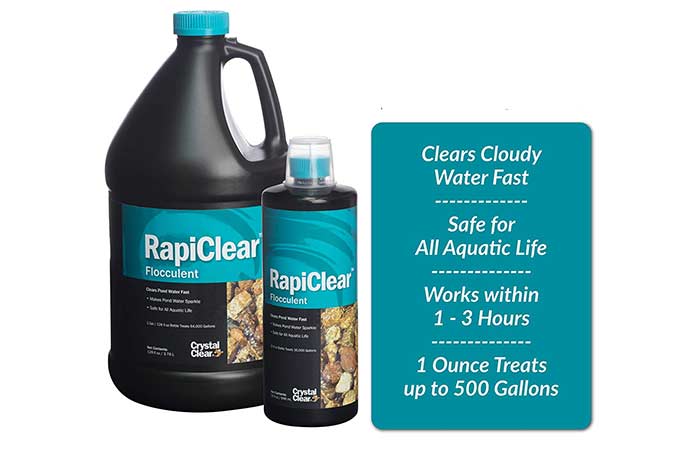
The advantage with flocculant is that it’s mild even for aquatic life. As such, you can use it even to clear up fish ponds and aquariums and any other places with marine life. It also works really fast in that your pool or pond will be clear in between 1 to 3 hours. It also just needs 1 oz of it for every 500 gallons.
BioGuard PowerFloc (32 oz) (2 Pack)

Coming in packs of 2, this flocculant is best suited to very cloudy waters. in fact, the cloudier the water is, the faster this flocculant will work. It’s dosage is 8 fl oz per 10,000 gallons of water which is a good concentration for flocculants. You still need to follow the other instructions in the guide on how to floc a pool for the best results.
Pool Basics Drop Down Flocculant
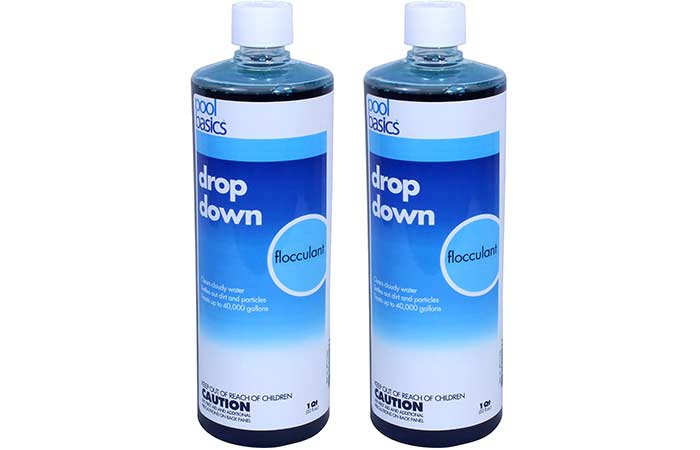
This flocculant is great for binding organic and inorganic particles in the water for ease of removal. Among its many features include the following:
- Binds small particles to clear cloudy water.
- Large coagulated particles sink to the bottom of the pool.
Cloroxx 59032CLX Sink to Clear Flocculent
Clorox pool spa sink to clear flocculent clears severely cloudy water by sinking debris to pool Floor for vacuuming.
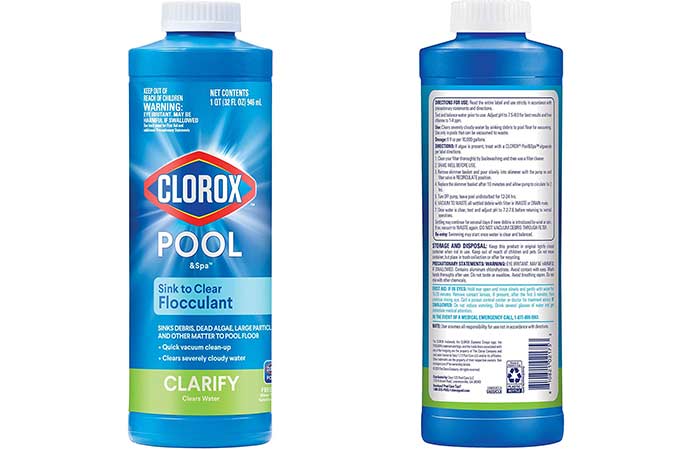
Flocculant not working – Pool still Cloudy after Floc!
Even after adding a pool flocculant to the water, you might still see some cloudiness in it. This can be due to the any of the following reasons:
- Imbalances in the free chlorine (FC) levels.
- Presence of young algae.
- Imbalances in calcium in the water.
- Foreign particles that haven’t been cleared out by the pump or the flocculant.
- Presence of ammonia in the water.
- Imbalance in the pH and TA in the water.
- Clogged or damaged filter.
The solutions to these issues are as follows:
- Balance the amount of free chlorine in the water.
- Eliminate the young algae from the pool.
- Correct the hardness of the water.
- Perform a backwash on the water to unclog the filters or simply replace the filters.
- Eliminate ammonia from the water.
- Balance the TA and pH levels in the water.
These methods should help clear the water when it remains cloudy after adding a flocculant.
Pool Floc not Sinking
A pool floc may not sink for a couple of reasons including not giving it enough time to get to the bottom of the pool, adding an insufficient amount of the flocculant, debris or any other stuff sitting on the surface of the pool water, live algae in your pool, or unstill/unsettled water in your pool.
Pool Flocculant vs Pool Clarifier
Chances are high that you may have heard or even used a pool clarifier before. Pool clarifiers are just like pool flocculants as they both coagulate the small pieces of dirt and germs into larger clumps that can be removed from the water either with the pool filter pump or a vacuum cleaner.
The main difference between them is the time they take. While flocculants work in about a day, clarifiers will take longer to do the same job. Also, while flocculants require that you don’t use the pool after adding them to the water, clarifiers can be used while using the pool for swimming and other activities.
Other differences include the following:
- You can use clarifiers with cartridge filters but you can’t use flocculants with cartridge filters.
- Given that clarifiers are a set-and-forget kind of chemical, they require less effort to use unlike flocculants.
- Flocculants require the replacement of water afterwards while clarifiers don’t. The reason for this is that flocculants require vacuuming which depletes the water requiring replacement afterwards.
As such, if you’re in a hurry to clear up your pool water, a flocculant would be your best option. You will need some work to get it done as seen in the steps above. If you’re in no hurry to use the pool, you can always use a pool clarifier.
Further Reading

